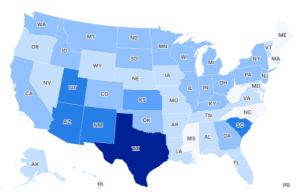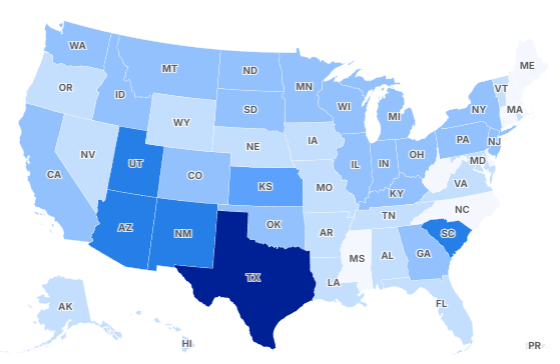The revelation of widespread store closures has sent shockwaves through the hospitality industry, as one of America’s most recognizable pizza brands grapples with what industry experts are calling a “perfect storm” of economic pressures. The scale of the closures, spanning multiple regions across the country, suggests deeper structural challenges that extend far beyond typical business fluctuations.
The Scope of the Crisis
Papa John’s has confirmed the closure of 74 pizza outlets across the United Kingdom, representing nearly one-fifth of its total store network in the country. The closures, which have occurred gradually over the past twelve months, were only officially acknowledged today, raising questions about the company’s transparency with stakeholders and the public.
The UK division of the American pizza giant has been hemorrhaging money, posting devastating pre-tax losses of £21.8 million in its most recent financial year. This represents a catastrophic turnaround for a brand that was generating healthy profits just a few years ago. The company’s revenue has also declined significantly, dropping from £95.9 million to £88.6 million according to newly filed accounts with Companies House.
Perhaps most tellingly, the last time Papa John’s UK operations turned a profit was in 2021, when the company recorded a pre-tax profit of £8.1 million. The dramatic swing from profit to substantial losses in just three years highlights the severity of the challenges facing the brand.
A Pattern of Decline
This latest round of closures builds upon previous restructuring efforts that have failed to stem the company’s financial bleeding. In March of last year, Papa John’s announced the closure of 43 “underperforming” restaurants across Britain, representing nearly a tenth of its total store network at the time. The company had hoped these strategic closures would allow for reinvestment in stronger locations, but the continued financial struggles suggest this strategy has not delivered the expected results.
The 74 closures announced today bring the total number of shuttered locations to over 100 in just over a year, representing one of the most significant contractions in the UK fast-food sector in recent memory. For a chain that once boasted more than 400 locations across the country, this represents a fundamental reshaping of the brand’s UK presence.

Economic Headwinds and Market Challenges
Company representatives have attributed the struggles to a confluence of challenging market conditions that have persisted since the global disruptions of recent years. A Papa John’s spokesperson explained: “In 2024 we continued to navigate the effects of global disruption; ongoing geopolitical issues, staffing shortages and rises in commodity costs.”
The statement reflects broader challenges facing the hospitality sector, where businesses have been caught between rising operational costs and consumers who have become increasingly price-conscious. The spokesperson added: “Whilst there was an improvement in consumer confidence, this remains below pre-pandemic levels with consumers more cost-conscious and more risk averse.”
These market dynamics have created a particularly challenging environment for pizza delivery chains, which have faced increased competition from both traditional rivals and newer market entrants. The rise of third-party delivery platforms has also changed consumer behavior, with many customers now expecting lower prices and faster service than ever before.
The Human Cost
While the company has been relatively forthcoming about the financial implications of the closures, the human impact remains largely unclear. Papa John’s has not disclosed how many employees have been affected by the shutdown of 74 locations, leaving former workers and their families in uncertainty about their futures.
The pizza chain employs thousands of people across its UK operations, from delivery drivers and kitchen staff to managers and administrative personnel. Each closure likely affects between 10-20 employees on average, suggesting that hundreds of jobs may have been lost in the process.
Chris Phylactou, managing director at Papa Johns UK, had previously acknowledged the human cost of the earlier closures, stating: “Our priority is our team members, who will be fully supported throughout this process. Our goal is to work with impacted team members and attempt to find redeployment opportunities where available.”
However, with the scale of the latest closures, finding alternative employment within the company for all affected workers appears increasingly challenging. The company has maintained its commitment to supporting displaced employees, though specific details about severance packages or redeployment success rates have not been made public.
Strategic Pivots and Future Plans
Despite the widespread closures, Papa John’s UK leadership maintains that the company is positioning itself for long-term success through strategic reinvention. The company has outlined plans to increase investment in research and technology, with a particular focus on better utilizing customer data to improve service delivery and menu customization.
“We understand the impact this will have on our team members and are committed to supporting them during this time,” Phylactou stated in previous communications about the restructuring efforts. The company has also indicated it will explore new types of locations beyond traditional high-street restaurants, including potential expansion into holiday parks and other non-traditional venues.
This pivot toward technology and alternative locations reflects broader industry trends, as fast-food chains seek to reduce overhead costs while maintaining accessibility to customers. The strategy represents a significant departure from Papa John’s traditional approach of establishing prominent storefront locations in busy commercial areas.

A Glimmer of Hope?
Not all news from Papa John’s UK operations has been negative. Despite the large-scale closures, the company has managed to open seven new locations across the country, suggesting that selective expansion continues in markets deemed viable. These new openings indicate that while the company is contracting overall, it is still identifying opportunities for growth in specific areas.
One notable success story has been the opening of a new branch in Sleaford, Lincolnshire, which brought 20 new jobs to the local area. Mayor of Sleaford, Councillor Anthony Brand, welcomed the opening, stating: “I was delighted to be asked to open Sleaford’s newest Papa Johns. As mayor, it’s always great to see restaurants and businesses creating new jobs in the borough for members of the local community.”
These selective openings suggest that Papa John’s strategy may be shifting toward a more targeted approach, focusing on locations with strong demographic profiles and limited competition rather than pursuing broad geographic coverage.
Industry Context and Competitive Landscape
Papa John’s struggles occur against the backdrop of an increasingly competitive UK pizza market. Traditional rivals like Domino’s and Pizza Hut have maintained stronger market positions, while newer entrants and independent operators have carved out significant market share. The rise of artisanal pizza chains and the growing popularity of plant-based options have also changed consumer preferences in ways that may have caught Papa John’s off-guard.
The company’s American roots, once a selling point for British consumers interested in “authentic” American-style pizza, may now be less of a differentiator in a market where consumers have access to diverse culinary options. The brand’s reliance on traditional meat-heavy pizzas may also be at odds with growing health consciousness and environmental awareness among UK consumers.
Financial Analysis and Future Outlook
The £21.8 million pre-tax loss represents more than just a bad year for Papa John’s UK operations; it suggests fundamental challenges with the business model in the British market. The company’s revenue decline from £95.9 million to £88.6 million indicates that the problem is not merely one of cost management but also of declining sales.
Industry analysts suggest that Papa John’s may need to consider more radical restructuring options if current strategies fail to return the business to profitability. This could include further store closures, significant menu changes, or even a potential sale of the UK operations to a local operator better positioned to navigate the British market.
The company’s last profitable year in 2021, when it recorded £8.1 million in pre-tax profits, now seems like a distant memory. The rapid deterioration from profit to substantial losses in just three years raises questions about management decisions and market positioning during this critical period.

Emily Johnson is a critically acclaimed essayist and novelist known for her thought-provoking works centered on feminism, women’s rights, and modern relationships. Born and raised in Portland, Oregon, Emily grew up with a deep love of books, often spending her afternoons at her local library. She went on to study literature and gender studies at UCLA, where she became deeply involved in activism and began publishing essays in campus journals. Her debut essay collection, Voices Unbound, struck a chord with readers nationwide for its fearless exploration of gender dynamics, identity, and the challenges faced by women in contemporary society. Emily later transitioned into fiction, writing novels that balance compelling storytelling with social commentary. Her protagonists are often strong, multidimensional women navigating love, ambition, and the struggles of everyday life, making her a favorite among readers who crave authentic, relatable narratives. Critics praise her ability to merge personal intimacy with universal themes. Off the page, Emily is an advocate for women in publishing, leading workshops that encourage young female writers to embrace their voices. She lives in Seattle with her partner and two rescue cats, where she continues to write, teach, and inspire a new generation of storytellers.









